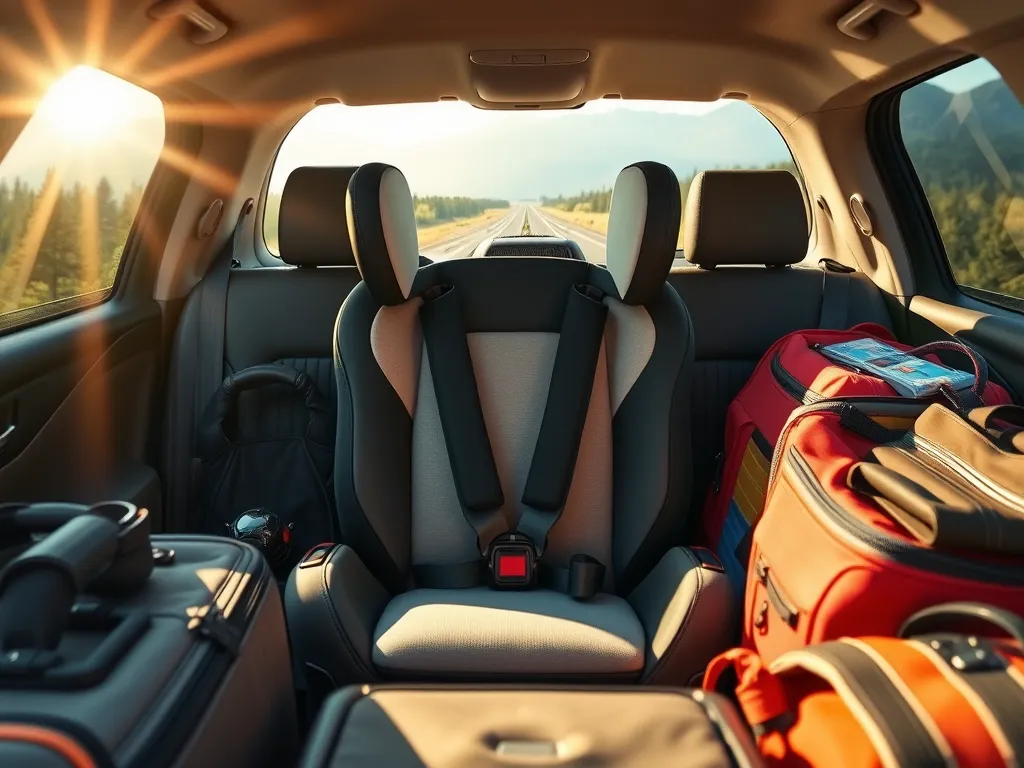Best Car Booster Seat For Travel

Car Booster Seats: Ensuring Safety and Comfort for Your Child
Car booster seats are an essential part of keeping your child safe and comfortable during car rides. Whether you're going on a road trip or just running errands around town, a booster seat provides the necessary support and protection for your child.
In this article, we will discuss the different types of car booster seats, important features to consider when choosing one, top picks for travel, tips for traveling with a booster seat, and safety guidelines to follow.
Let's start by exploring the different types of car booster seats available in the market.
Backless booster seats are designed for older children who have outgrown their forward-facing car seats. These seats elevate your child to a proper height so that the seat belt fits correctly across their chest and hips. They are lightweight and easy to move between vehicles.
High-back booster seats, on the other hand, provide not only height but also head and neck support for your child. They have a built-in backrest and are ideal for long car rides.
Types of Car Booster Seats
Backless booster seats are designed for older children who have outgrown their forward-facing car seats. These seats elevate your child to a proper height so that the seat belt fits correctly across their chest and hips. They are lightweight and easy to move between vehicles.
Best Car Booster Seat For Travel
High-back booster seats, on the other hand, provide not only height but also head and neck support for your child. They have a built-in backrest and are ideal for long car rides.
Convertible booster seats are versatile and can be used as both forward-facing car seats and booster seats. They have a higher weight limit and can accommodate your child as they grow.
Features to Consider
When choosing a car booster seat, it's important to consider its weight and portability. Some seats are heavier and bulkier, which may make it challenging to move between vehicles or carry during travel.
Safety ratings are also crucial when selecting a booster seat. Look for seats that have been tested and certified for safety by reputable organizations such as the National Highway Traffic Safety Administration (NHTSA).
Ease of installation is another essential feature to consider. Look for seats that are easy to install and secure in your vehicle. Some seats have a latch system or seat belt guides to ensure a proper and secure fit.
Comfort and support are important for your child's convenience during car rides. Look for seats with padding and adjustable headrests to provide proper support and a comfortable seating position.
Adjustability is also crucial to ensure a proper fit as your child grows. Look for seats with adjustable height and width to accommodate your child's changing needs.
Top Picks for Travel
The Graco Backless TurboBooster Car Seat is a popular choice for travel. It is lightweight and easy to install, making it convenient for frequent car changes. It also has a cushioned seat and adjustable height for comfort.
The Evenflo Big Kid Sport High Back Booster Car Seat is another great option for travel. It has a removable backrest, making it easy to transition into a backless booster seat as your child grows. It also has built-in cup holders for convenience.
For those looking for premium features, the Britax Skyline Belt-Positioning Booster Car Seat is a top pick. It offers superior safety and comfort with its deep side walls and adjustable headrest. It also has two layers of side impact protection.
Tips for Traveling with a Booster Seat
Before you travel, it's essential to check the car rental policies regarding booster seats. Some car rental companies provide them, while others may require you to bring your own.
Using a travel bag for your booster seat can protect it from damage during transit. Look for bags that are lightweight and easy to carry.
When installing the booster seat in the car, make sure to follow the manufacturer's instructions for proper installation. Double-check that the seat is securely fastened and the seat belt is correctly positioned.
A portable harness can provide additional safety and restraint for your child. It can be used in conjunction with the booster seat, especially if you encounter rental cars without a tether anchor.
Lastly, it's a good idea to practice using the booster seat before your trip. Familiarize yourself with the installation process and adjust the seat to ensure a proper and secure fit for your child.
Safety Guidelines
Adhering to age and weight requirements is crucial when using a booster seat. Different booster seats have specific guidelines regarding the minimum age, weight limit, and height limit. Make sure to choose a seat that is appropriate for your child's age and size.
Proper seat belt placement is important for your child's safety. The seat belt should lie across their chest, not on their neck or face, and the lap belt should rest low on their hips, not on their stomach.
It's important to replace a booster seat if it has been involved in a crash, even if there is no visible damage. Additionally, booster seats have an expiration date, usually around six to ten years from the date of manufacture. Check the manufacturer's guidelines for the specific expiration date of your seat.
The positioning of the booster seat in the car is crucial for safety. It should be placed in the back seat, preferably in the middle, away from any airbags. Make sure the seat is securely fastened and does not move around.
Lastly, consider the crash test performance of a booster seat. Look for seats that have undergone rigorous crash testing and have a good safety performance rating.